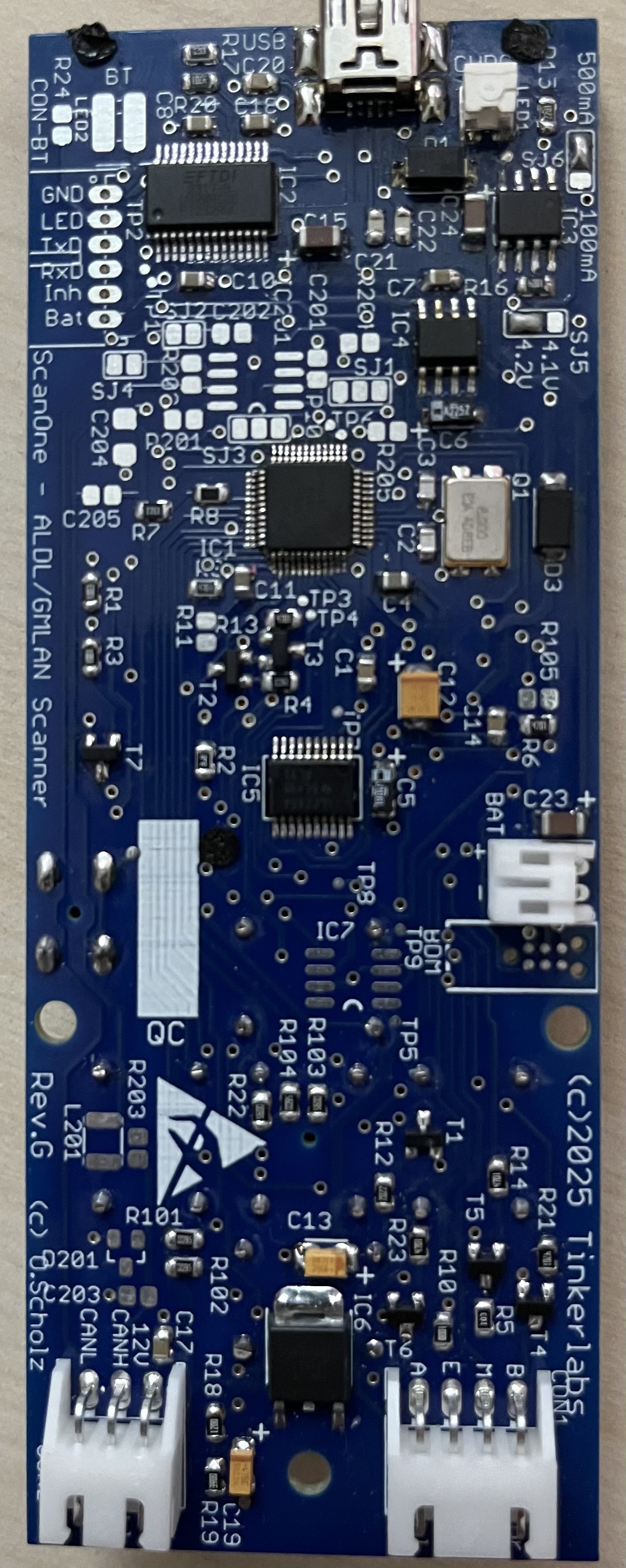This project is based on many years of development of scantools for the Fiero. I felt the urge to build the ultimate handheld scantool, also as a playground to develop some aesthetically pleasing software with a slick GUI. When I found the Bopla BS400 series handheld enclosure I wanted to build a scantool with a small color TFT screen.
I chose a 1.8" with 128x160 pixels resolution and four switches for navigation: Up, Down, OK and Back/Menu. Initially, a rotary encoder was supported as an alternative, but the large knob made the device clunky. Software was updateable through USB, so any standard PC or Mac with a serial terminal program can be used to update the firmware using a built-in bootloader. I tried to keep the component cost low, so there is minimal hardware on the printed circuit board and everything was powered with 3 AAA batteries.
Key features are:
- Small single circuit board with interface for 160 Baud ALDL and 8192 Baud UART protocols, optionally single wire CAN is supported.
- Color TFT screen with intuitive GUI using icons, text and graphs for diagnosis
- Support for possibly many vehicles
- Simple navigation using a few buttons
- USB for software updates (and recently charging the battery)
- Can be powered through OBD connector
- Quick-disconnect Industry Standard 9-pin DB connector for diagnostic cable.
However, when I build the first prototypes for friends, a few things quickly became clear:
- The cost for the final device is much more than the circuit board with processor and TFT, which would have cost maybe $20. The enclose with battery compartment was another $20, plus having the enclosure milled and drilled, the plexiglass silkscreened, plus the ALDL-Cable plus the rubber bumper, not to mention labor for soldering let alone a dime for software or warranty repairs or shipping cost from the various parts sources made this project financially unattractive. We're talking close to $100 for the parts alone. Solution: it ended up here for you to build it yourself. Then you're spending your time and you see the real cost of the parts. And building it is fun!
- Navigation with the four keys was confusing for people, because the buttons are not silkscreened (see cost). Solution: I went for a navigation "joystick" with up-down-left-right and OK silkscreened to it. This has its price: the MEC switches are pricy, especially the backlit ones. But it looks nice and is intuitive.
- The AAA batteries are drained after a few weeks. There is no power button, the unit just goes to sleep and draws a few Microamps, yet, enough to drain the AAA batteries over weeks. Solution: Use LiIon rechargeable battery charged through USB. Adds another $10-$15 to the tab for battery and charging circuitry, but well worth it.
- The screen is a little small when it comes to drawing graphs, and 16 characters per line and 20 lines is not a whole lot of text either. Solution: Use a 2.4" display with 240x320 resolution. Using a two font sizes either a lot of information can fit on the screen or the font looks a lot nicer than the 8x8 Font on the small screen.
- The bigger screen also meant using the "bigger brother" of the BS400 series enclosure, the BS500. But it is not significantly more expensive, and I think it's a really neat solution.
I don't know if I should name the new, bigger version "ScanTwo". Being lazy, I kept the name the same. And the two units run off the same software base with very few differences. So, the choice is yours: you can build either version, small and compact or slightly larger and slightly more expensive. With or without the rubber bumper. Which is even available in different colors. The component cost is pretty much the same for both versions, except for the enclosure and larger TFT. You will find everything that you need to build it right here.
 Oliver Scholz
Oliver Scholz Just finished soldering the Rev.G of the circuit board, and it’s working. I only added a few bells and whistles, like a beauty bezel for the TFT complete with mounting holes for melt rivets or a connector for a BT module and LED instead of serial USB. For now, I’m happy!
Just finished soldering the Rev.G of the circuit board, and it’s working. I only added a few bells and whistles, like a beauty bezel for the TFT complete with mounting holes for melt rivets or a connector for a BT module and LED instead of serial USB. For now, I’m happy!